Simply put, changing the gain of an audio signal happens in the input stage, but a bass boost is commonly in the output, or in post-production. There are a few other things to talk about, but I’ll put it to you in simple terms right now.
The difference between bass boost and gain is the former increases only the low-frequency range whereas the gain affects the entire audio signal. Also, it’s not uncommon for gain to refer only to the input level before going into a preamp, compared to a bass boost which is often in post-processing.
What’s The Difference Between Bass Boost and Gain?
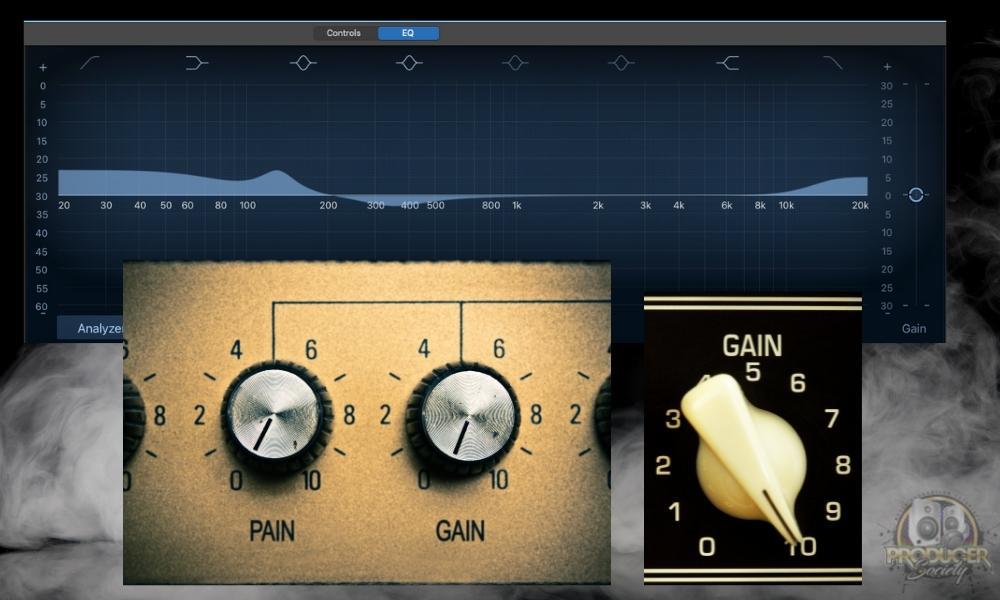
What I explained earlier about bass boosts and gain is like the TLDR of the topic. That said, I think there are a few things we could talk about specifically. For one, an increase in gain and a bass boost are used for different purposes.
For instance, increasing the gain on your Focusrite Scarlett 2i2 (a great audio interface) has a different purpose and effect than a bass boost on an EQ or even on a guitar amplifier (here’s how to use an EQ by the way).
I think understanding the difference between both of them is good for you if you’re a beginner, so we’ll explore it in detail. That’s because you’ll select one, or both, based on what you want to achieve.
Here are some key things to talk about. But first, here’s a short video that shows how a post-processing bass boost sounds versus an increase in gain:
1) Gain Increases Amplitude (Volume) of the Entire Audio Signal – Usually At The Input Level

While the term “bass boosting” generally refers to a type of processing that occurs after recording, changes to gain are made to an audio input signal before going into a preamp.
This is a key difference. Usually, a guitarist – or whoever else – will turn up the gain on their audio interface or their guitar signal, before recording.
You don’t turn the gain up after you’ve recorded. Maybe there are some exceptions to this, but I believe it’s more common to adjust gain beforehand.
A useful story: If you look back on the history of electric guitars and how that signature distorted sound in rock music came about, we can trace it to guitarists overloading their amplifiers by turning the gain up “too high”.
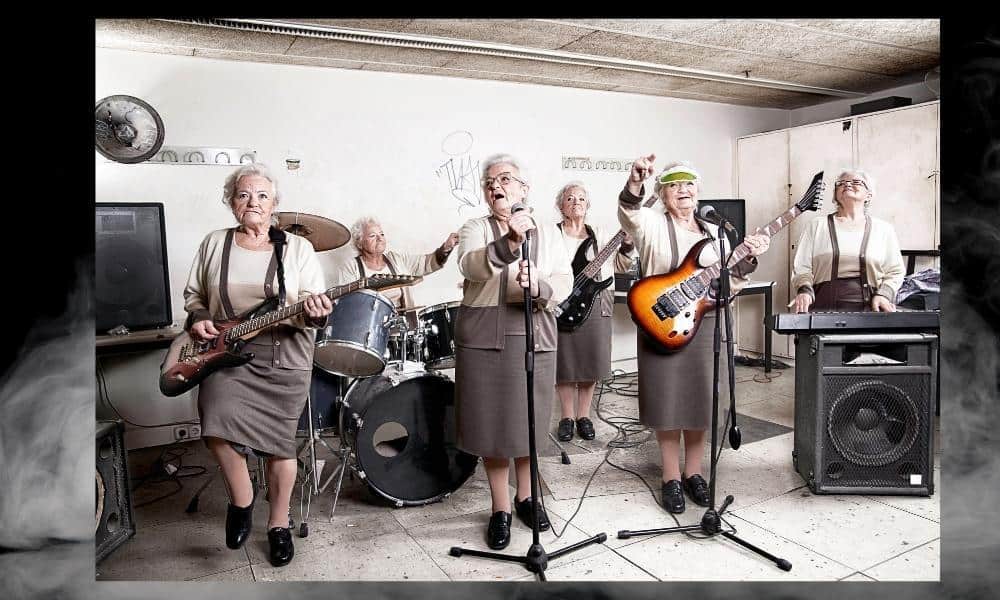
They would increase the input signal coming in from their guitar into the preamp, driving the signal too hard and then creating distortion at the output level. That’s why you may find the terms “gain” and “distortion” used interchangeably, even though they’re not really the same thing.
Of course, there are better ways to achieve this effect now. How it’s generally done now is through the use of a distortion or overdrive pedal, which creates the same overload of the input signal internally, and sends that to the preamp.
This avoids the risk of damaging your amp. An Ibanez TS9 Tube Screamer is an example of a popular distortion pedal that a lot of people really like.

A key point to understand about gain is that it can have the effect of altering the tone of your input signal, without necessarily altering the overall loudness or output volume of your guitar or recording.
Especially if you’re increasing the gain with an overdrive pedal. You can use the volume setting on it to match the volume to what it was before the pedal’s processing.
That said, an increase in volume will be an unintended consequence of increasing gain. It’s not uncommon for guitar players, especially beginners, to crank the gain and drop the total volume down.
The reason why they do that is that it boosts the strength of the audio signal and makes up for inconsistencies in their playing technique. Simply put, it’s easier to play more notes – and faster – if the gain is high.
Guitarists often use compression for the same thing (I know I do too. It sounds awesome). The MXR Dyna-Compression Pedal is a good choice for this. Read my article on compression to learn more about it.
2) Bass Boosting Increases Only the Bass Frequencies – And It’s Usually in Post-Processing

The term “bass boost” – in the way that most people will use it – sometimes refers to that handy button on your stereo. You’ll commonly find it in the equalizer settings of your car radio which allow the user to increase all of the bass frequencies of a song, album, or EP.
It’s important to emphasize what it actually does. Unlike gain, a bass boost will not affect the entire audio signal in quite the same way.
Although, the track may appear way louder because some frequencies are. Also, the nature of frequencies and human hearing plays a role in this.
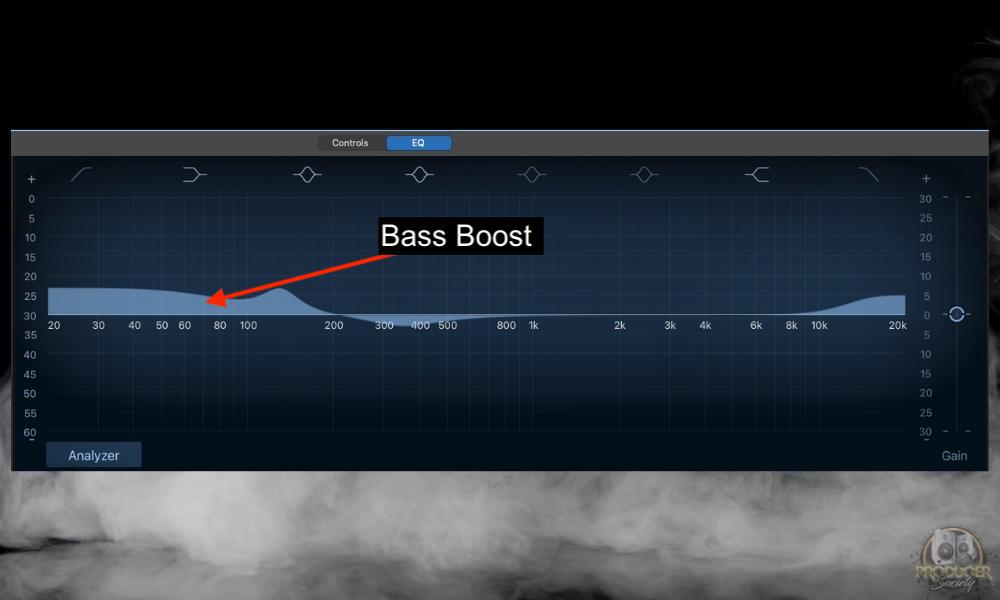
Here’s a note on that: Songs generally have instruments, sounds, and vocals that range across the whole frequency spectrum that humans are able to hear (20Hz to 20KHz).
Bass frequencies occupy space under 250Hz. Boosting the bass only affects those frequencies under 250Hz. You can see that from the image shown above.
Although altering the bass amplitude of the bass frequencies can affect your ability to perceive the higher frequencies (from 250Hz upwards), there is no fundamental alteration to anything but the bass sounds.
This differs to gain which affects a signal across the entire frequency spectrum. That said, you actually can increase the gain of the audio signal on the Channel EQ. In fact, if you take a look at the image above again, you’ll notice the “Gain” slider on the right-side.
3) Engineers Use Tools Like EQ & Mutipressors to Bass Boost – Gain Is Usually Controlled Elsewhere
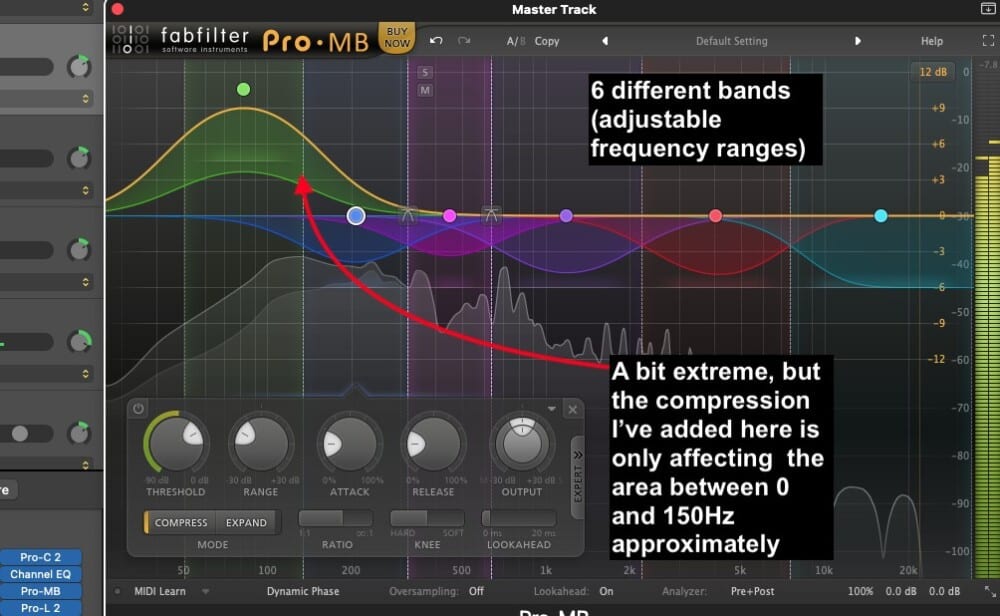
If you’ve only been exposed to bass boosting using an EQ, you might not be familiar with the fact that there is a method for boosting the bass frequencies in another way.
Audio engineers can import a track into their DAW, and use either the aforementioned EQ or a multi-band compressor to increase the bass. Let’s talk about that a bit.
An equalizer, like the super-popular Fab Filter Pro-Q plugin, presents you with a dynamic, graphic illustration of the entire frequency spectrum. With this, you can see the amplitude of each of the frequency bands.
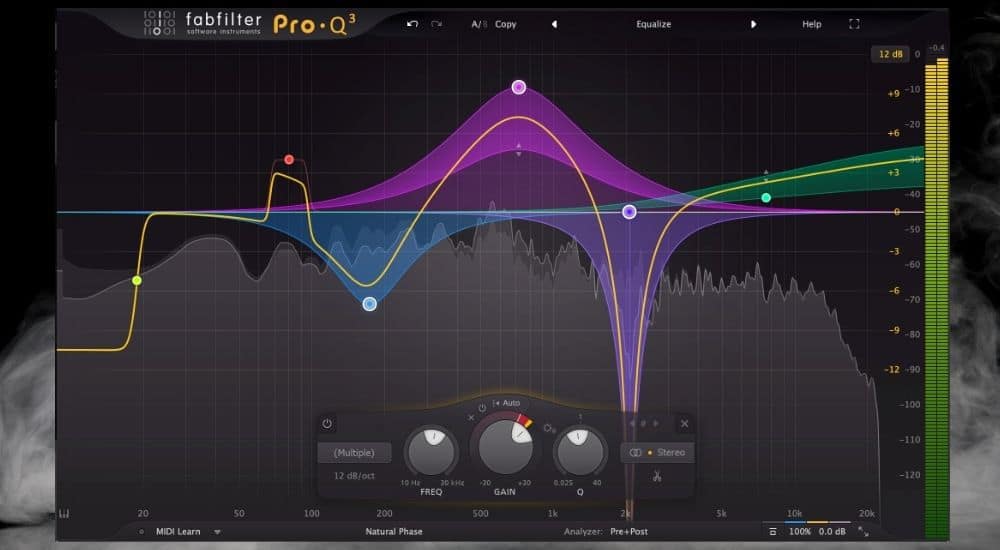
Using a multi-band compressor, an engineer might also look to achieve a perceived volume increase in the bass frequencies.
You could do this either by compressing the highs to make the lows stand out more, or you could use the makeup gain on the multi-compressor. Despite the obvious differences between the two, some people still ask if gain and bass boosts are the same.
Is Bass Boost the Same as Gain?
Simply put, bass boost and gain are not the same, because the gain affects the entire audio signal, whereas a bass boost targets only the low-end. Additionally, bass boosts are usually in the post-processing phase whereas the gain is in more often in the input phase.
What you should be understanding by now is bass boost and gain are fundamentally different concepts, although modern slang and terminology have conflated them at times. Similar to how people refer to hip-hop melodies and rhythm sections as “beats.”
Does Bass Boost Increase Volume?

Boosting the bass does increase the volume, due to the rise in amplitude of the bass frequencies. Additionally, you may even have to increase the higher frequencies to balance them out. An increase in both the low and high frequencies will obviously mean the total volume is higher.
Another important thing to note is that our brains typically have a much easier time hearing bass frequencies. This study in the PNAS Journal showed that it’s easier for our brains to hear rhythm and bass. It makes sense because bass frequencies are thicker and have longer wavelengths.
This is one reason why you can rattle a car with them easier than with highs. There’s more power and “boominess” there. In a closed listening environment like a car, this can create the feeling of the bass “lasting” longer than the treble tones.
Important Things to Note About Bass Boosts and Gain
1) Gain Increases Are Sometimes in the Output Stage and Bass Boosts Can Be In the Input Stage
As far as I know, none of this is really a rule. You can very well increase the total gain on a project after it has been recorded if you need to. It’s just that it’s usually not done this way.
I know sometimes that if I want to increase the total volume of a song, I’ll just increase the gain by +3-4dB on the master track.
This is probably “incorrect,” but I do what I have to get the desired result. The video that I showed at the start of the article was an example of this very thing. The same thing goes for increasing the bass of your guitar amplifier.
Gear Mentioned
1) Focusrite Scarlett 2i2
2) MXR Dyna-Compression Pedal
3) Fab Filter Pro MB Multipressor
4) Fab Filter Pro Q EQ

 Written By :
Written By :